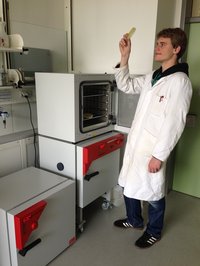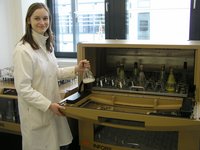Techniques
Cultivation on Agar Plates
To isolate pure cultures of bacteria or fungi we use surface cultures on complex or minimal media poured in Petri dishes. They are incubated at defined temperatures. In breeding chambers we use e.g. 37°C for Escherichia colistrains or 24°C for Botrytis cinerea.
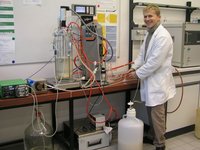
Chemostatic culture
We cultivate microorganisms in a 7-litre glas vessel. At constant rate fresh medium is pumped in. A balance controls the efflux of culture broth keeping the mass of the system constant. By such a controlled dilution a steady state concerning metabolic parameters can be reached after five volume exchanges.
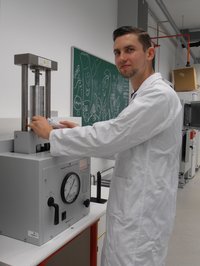
Disintegration of microbial cells
After production of microbial biomass, e.g. in a shake flask, we harvest the bacteria or fungal cells and open them to invesitage intracellular compounds, e.g. enzymes. The rigid cell wall can be disintegrated by use of a French Press. About 100,000 kPa , that is a thousand times the pressure we are exposed by our atmosphere, are generated inside. But, the main point is the pressure release occuring when the microorganisms leave the French Press via a special valve. After separation of the cell wall fragments we get a crude extract allowing analysis of several thousand types of molecules.
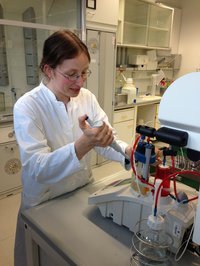
Enzyme Assay via Titrimetry
To analyse the metabolism of microorganisms we quantify enzyme activities. An extracellular enzyme to degrade e.g. soybean oil fed as source of carbon and energy is a lipase. It catalyses the hydrolysis of triglycerides liberating fatty acids. These relase protons which can be titrated by a carefully adjusted sodiumhydroxide solution. The consumption per time to keep pH constant is proportional to the inserted enzyme activity.
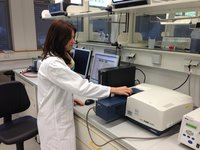
Enzyme Assay by Photometry
In a photometer scattering or absorption of light is used to measure the activity of enzymes. One powerful tool is the use of structural analogs that release colors after enzymatic conversion. Nitrophenols e.g. can lead to yellow colors.
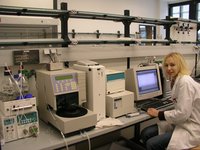
Metabolite analysis by High Performance Liquid Chromatography (HPLC)
To engineer a metabolic pathway a careful analysis of extracellular and intracellular compounds has to be performed. In extracts we determine e.g. concentrations of amino acids if they are needed as precursors. A powerful method is chromatography.

